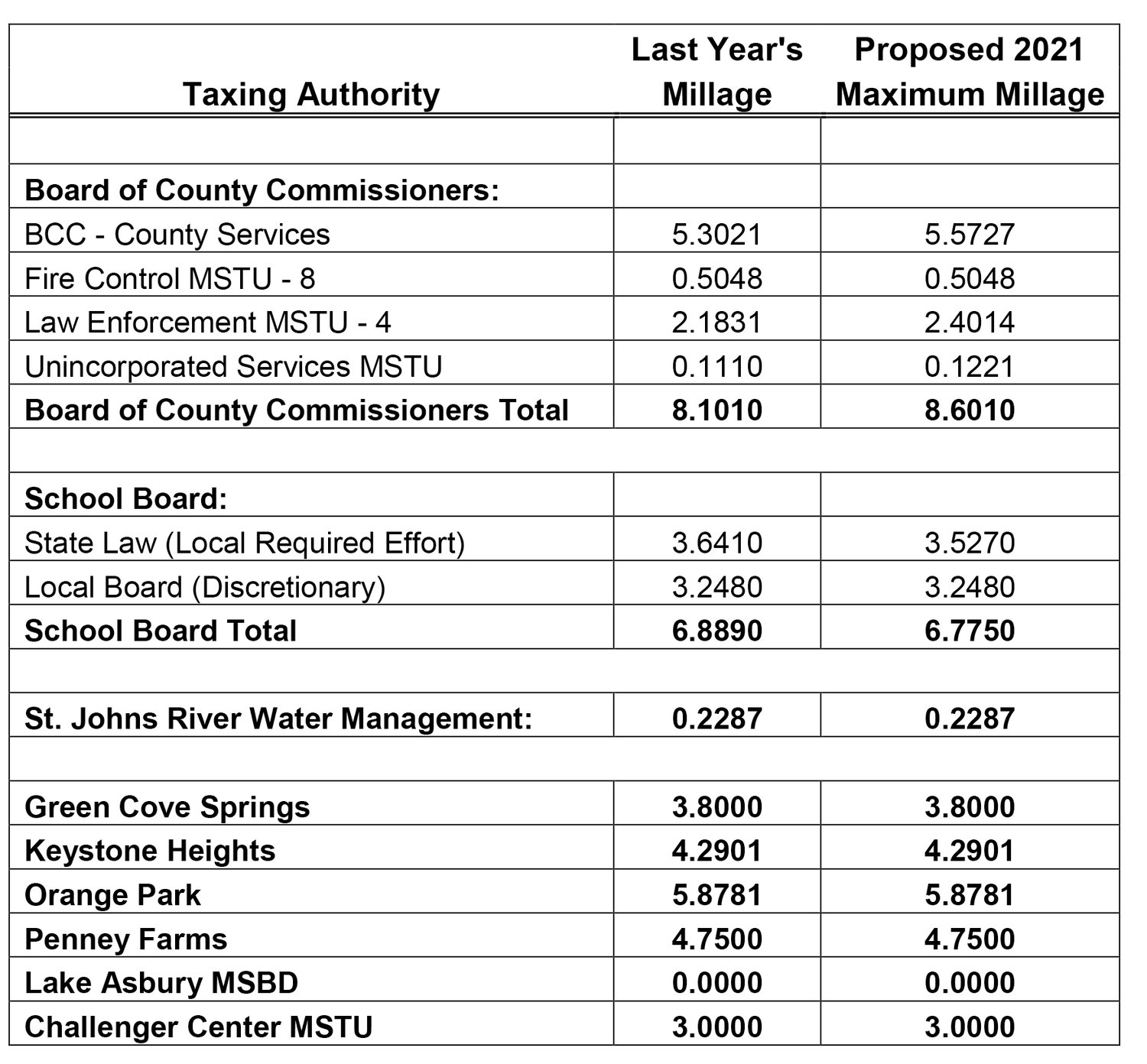County residents to receive truth in millage notices
CLAY COUNTY – The Notice of Proposed Property Tax forms, also known as Truth in Millage notices were mailed to all county property owners, according to Clay County Property Appraiser Tracy S. …
This item is available in full to subscribers.
Attention subscribers
To continue reading, you will need to either log in to your subscriber account, or purchase a new subscription.
If you are a current print subscriber, you can set up a free website account and connect your subscription to it by clicking here.
If you are a digital subscriber with an active, online-only subscription then you already have an account here. Just reset your password if you've not yet logged in to your account on this new site.
Otherwise, click here to view your options for subscribing.
Please log in to continueDon't have an ID?Print subscribersIf you're a print subscriber, but do not yet have an online account, click here to create one. Non-subscribersClick here to see your options for subscribing. Single day passYou also have the option of purchasing 24 hours of access, for $1.00. Click here to purchase a single day pass. |
County residents to receive truth in millage notices
CLAY COUNTY – The Notice of Proposed Property Tax forms, also known as Truth in Millage notices were mailed to all county property owners, according to Clay County Property Appraiser Tracy S. Drake.
Florida law requires the TRIM notice to be prepared and mailed each year by the property appraiser on behalf of the taxing authorities. Although the TRIM notice is not a tax bill, it is intended to notify property owners of possible changes that may appear on the November tax bill. Therefore, property owners are encouraged to review the information and deadlines carefully.
The property appraiser is responsible for administering exemptions and estimating the value of all property as of Jan. 1. The TRIM notice displays three values: market value, assessed value, and taxable value. The market value is the most probable sale price on Jan. 1, and may increase or decrease as the market dictates. Due to the upward direction of the real estate market in 2020, the majority of properties in Clay County experienced an increase in market value.
The assessed value is the market value less any benefit for the Save-Our-Homes cap, or other assessment limitations. Although market values increased, the assessed values of properties with an existing homestead exemption will be capped at 1.40%, and non-homestead residential and commercial properties will be capped at 10% – with the exception of properties with new construction, additions and/or renovations.
The taxable value is the assessed value minus any exemptions. It is important to remember that while the assessed value of property may be capped, taxes are not.
Ad valorem property taxes are calculated as follows: Taxable Value x Millage Rate = Property Taxes. The taxable value is estimated by the property appraiser and the millage rates are established by the taxing authorities.
Property owners who have questions regarding an exemption status or a property’s value are encouraged to contact the property appraiser’s office for an informal review. This informal review can be handled in person, by telephone, email or mail. A property owner also has the option to file a formal appeal with the Value Adjustment Board by the deadline listed on the bottom of the TRIM notice on Sept. 14. This date is also the absolute deadline for the property appraiser to accept late-filed applications for exemptions, assessment reductions and agricultural classifications.
The back of the TRIM notice displays public hearing dates and explanations of the various columns to assist property owners in understanding the notice. By law, each taxing authority must establish maximum millage rates necessary to fund their proposed budgets. The millage rates can be reduced prior to the mailing of the November tax bills.
Property owners who are concerned or have questions regarding proposed budgets, millage rates or resulting taxation levels, should contact the taxing authorities or attend the budget hearings listed on the notice.
Additional information including a TRIM Guide, property record cards, Taxpayer’s Bill of Rights, and answers to Frequently Asked Questions are available on the property appraiser’s website at www.ccpao.com.








